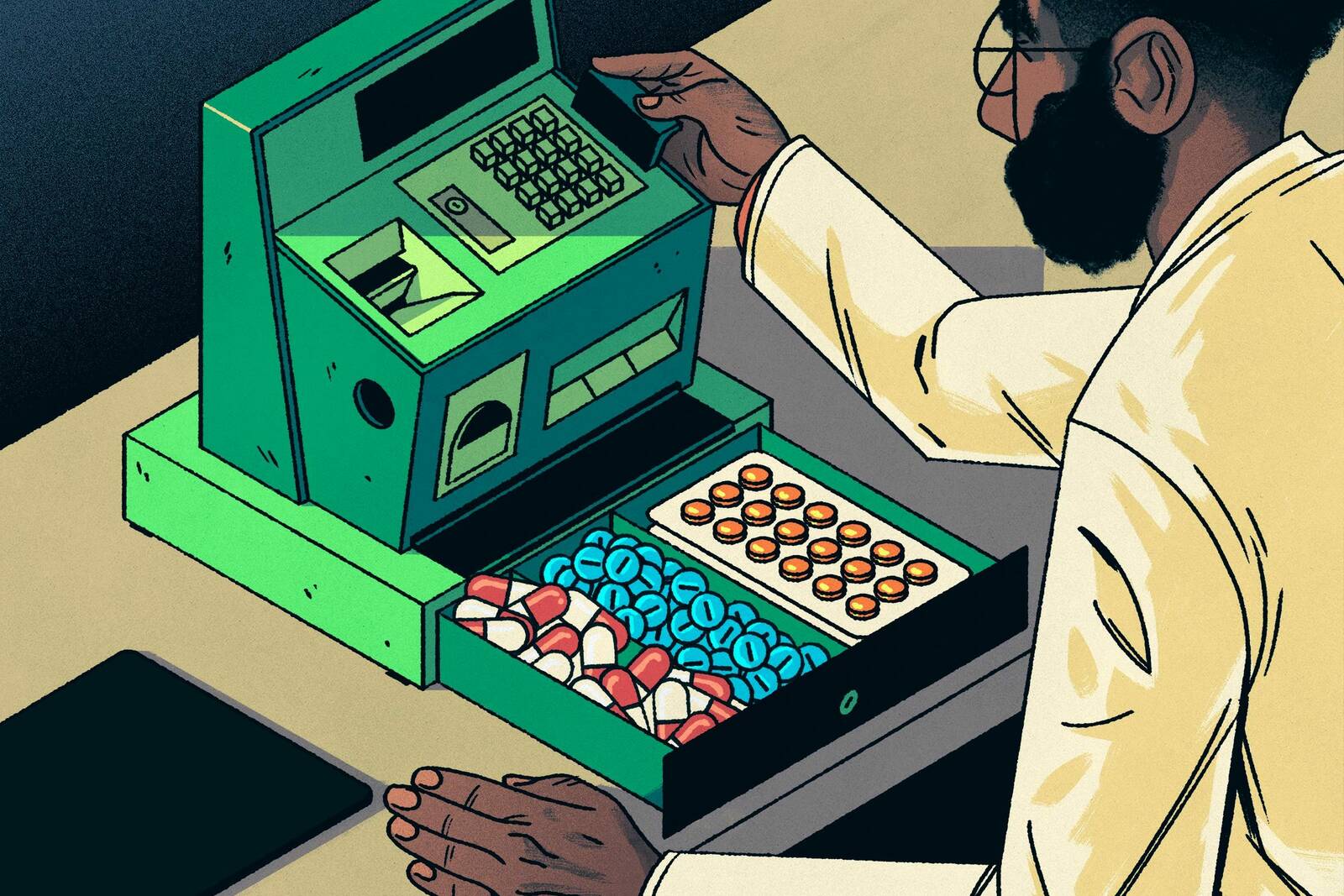Healthcare Oct 28, 2020
Choosing the Right Health-Insurance Plan Could Add Years to Your Life
New evidence suggests that certain Medicare Advantage plans increase life spans more than others. Here’s what the best plans have in common.

Yevgenia Nayberg
Many American consumers know the overwhelming feeling of staring at a plethora of insurance plans with no idea which one to pick.
The variables are endless: deductibles, premiums, drug coverage, which doctors are in network, and so on. But will selecting one plan over another really make much of a difference to one’s health?
Yes, it turns out—and not just a little. In a recent study, Amanda Starc, an associate professor of strategy at Kellogg, and her colleagues analyzed annual mortality rates for Medicare Advantage plans, which are privately run alternatives to traditional government-administered Medicare. The team found “huge” differences between the best and worst plans, Starc says.
The researchers conclude that enrollees’ choice of insurance plan could have a substantial effect on their life span, on average. “It’s not just this abstract financial product,” Starc says. “It matters.”
However, the study found that customers aren’t getting the information they need to pick the best plans. Although each Medicare Advantage plan is assigned a star rating, those ratings don’t accurately reflect the plans’ effects on mortality. Instead, a better proxy is how much a given plan tends to spend on patient care.
And, perhaps unsurprisingly, more expensive plans tend to spend more on patients—meaning, in the absence of better information, savvy consumers might consider erring on the side of the costlier plan.
How Much Do Insurance Choices Matter?
Previous research has suggested that “people are bad at choosing insurance plans,” Starc says.
This matters in the debate over whether to offer a single government plan (such as “Medicare for All”) or to continue offering a marketplace of many private plans. Arguments in favor of a marketplace assume that giving consumers options leads to better health outcomes. But this market approach makes sense only if meaningful quality differences between the plans exist. After all, if a consumer has 30 options, but all the plans have a similar effect on one’s health, then there is little public-health benefit to offering so many choices—and the consumer stands to gain nothing from spending time and effort comparing those options.
To evaluate how various plans actually affect health outcomes, Starc teamed up with Jason Abaluck at Yale School of Management, Mauricio Cáceres Bravo at Brown University, and Peter Hull at the University of Chicago. The researchers focused on the private Medicare Advantage (MA) program, which offers consumers an abundance of choice; in 2010, a typical county had 30-plus plans available. The team obtained data on about 15 million people, aged 65 and up, who enrolled in more than 75,000 of these plans from 2008 to 2011.
Good Medicare Plans, Bad Medicare Plans
First, the team calculated the annual mortality rate across all of the plans. Overall, 4.7 percent of people in the MA program died each year.
The researchers then compared mortality rates across plans in each county, controlling for demographic factors such as the beneficiaries’ age, sex, and race. Substantial differences emerged: In the average county, a plan that was one standard deviation below the average mortality rate had a mortality rate of 3.8 percent. Put another way, enrolling in that plan instead of an average plan was linked to a 19 percent lower risk of dying per year.
“The plans aren’t all the same,” Starc says. “They’re wildly different.”
But the researchers couldn’t conclude right away that plans with seemingly lower mortality were truly better, since people weren’t randomly assigned to plans. It was possible, for instance, that healthier people were just more likely to enroll in the lower-mortality plans, in which case the plans would not deserve credit for the improved health outcomes.
The takeaway for consumers: “you may not want to choose the cheapest plan.”
— Amanda Starc
To tease out the true impact of the plans, the team took advantage of a quirk in the system. Each year, insurance companies stopped offering some plans for reasons unrelated to medical care (for instance, a policy change that lowered reimbursement from the federal government). People in those terminated plans then had to choose new ones.
The researchers found that these customers’ choices followed a phenomenon called “regression to the mean,” in which exceptionally high or low data points move toward the average. Customers who had been in “good” plans—those with low observed mortality rates—tended to choose a more average plan next. And those who had been in “bad” plans also tended to drift toward more average plans.
Starc and her colleagues then observed people’s health outcomes after they switched to their new plans. This natural experiment allowed the team to better determine the causal effect of moving into a certain plan on beneficiaries’ mortality, rather than simply observing the mortality rate of all beneficiaries in a plan.
Their analysis revealed that those who moved from good to average plans after their plan ended became more likely to die, while those who moved from bad to average plans became less likely to die. In other words, a plan’s observed mortality rate did not merely reflect the preexisting health of the people who chose that plan. The difference in death rates was “really about the plan and not the people,” Starc says.
When It Comes to Insurance, More Money Buys Better Health
The team had established that real quality differences existed between plans. But was there a way for the average consumer to distinguish between the plans?
For instance, the researchers had found that plans with lower mortality rates really did have the causal effect of lowering consumers’ risk of death, meaning that the mortality rate could ostensibly be used as an accurate signal of a plan’s quality. However, since the plans did not advertise their mortality rates, this was not a useful indicator for the average consumer.
What the federal government did offer were star ratings: each plan was rated with one to five stars, based on factors such as customer surveys and the percentage of beneficiaries screened for various diseases.
So should a shopper just pick the five-star plan? After comparing the ratings with the plans’ effects on death rates, the team concluded that “the answer is no,” Starc says. “That’s a terrible predictor of mortality.”
But other features of the plans were more telling about the quality. Better coverage for prescription drugs was linked to a greater reduction in mortality, they found. The same was true for plans that spent a higher percentage of premiums on health care, rather than funneling the money toward, say, administrative costs or profits.
In short: for the average Medicare Advantage consumer, “plans that spend more are better for your health,” Starc says.
Insurance Consumers Underestimate the Value of a Life
Even though the star ratings had not proved very informative, the study found that consumers somehow were gravitating toward better plans than would be expected if they had merely chosen at random. Starc suspects that they may have relied on other indicators, such as the insurance company’s reputation or the hospitals in network.
But, curiously, people didn’t seem willing to pay much to lower their risk of dying—perhaps because they didn’t have enough information to ascertain just how much an additional dollar would improve their health.
The researchers’ analyses suggested that consumers were willing to pay about $180 to $220 more per year for a plan that offered a one-percentage-point lower probability of dying that year. While $220 might seem like a lot in terms of a premium, common estimates place the value of a statistical life in the millions (based on measures like how much money people demand to perform a dangerous job).
Such estimates suggest that the value of such a one-percentage-point improvement should be on the order of tens or hundreds of thousands of dollars. “You make other decisions in your life that suggest you value a one-percentage-point reduction a whole lot more than $250 a year,” Starc says.
How to Nudge Insurance Shoppers Toward Better Choices
The findings suggest that the Medicare Advantage program could improve public health by simply getting rid of low-quality plans. For instance, if the government eliminated the worst five percent of plans and randomly shuffled its beneficiaries into other plans, the researchers estimate that it would cut the number of elderly deaths per year by roughly 10,000.
In practice, though, this intervention could have unintended ripple effects. For example, if an insurance company runs both low- and high-quality plans, and the bad plans are eliminated, the firm may no longer be able to cover costs of its remaining good plans.
But other policy measures could also improve health outcomes. For instance, the government could publish the plans’ observed mortality rates, since, as the researchers demonstrated, these numbers accurately reflect the plans’ real effects on mortality. Consumers would then be more likely to make better plan choices, while insurance companies would be motivated to boost their plans’ quality to keep mortality rates low.
Until then, the best publicly available indicator of a Medicare Advantage plan’s effect on mortality is the portion of premiums spent on patient care—and the plan’s price can be a rough proxy for that.
The takeaway for consumers: “you may not want to choose the cheapest plan,” Starc says.





